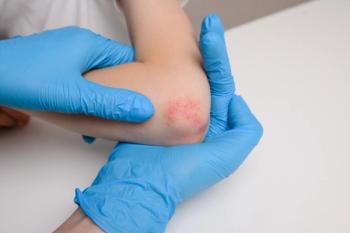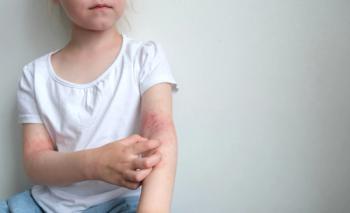
- Drug Topics December 2022
- Volume 166
- Issue 12
Treating Skin Cancers in the Immunotherapy Era
Examining what immunotherapy can do for skin cancer treatment.
One of the first things Todd E. Schlesinger, MD, director of the Dermatology and Laser Center of Charleston in South Carolina, noted in his opening remarks of his session on treatment for basal cell carcinoma (BCC) and cutaneous squamous cell carcinoma (CSCC) was “whether locally advanced or advanced, you do not want to identify these conditions alone.” A multidisciplinary team is crucial every step of the way, according to Schlesinger.1
Schlesinger reviewed 3 key points practitioners should note in dealing with these cancers: (1) identify patients with locally advanced BCC (laBCC) or advanced CSCC who are candidates for systemic therapy; (2) highlight the importance of a multidisciplinary approach in the management of these patients; and (3) review the clinical efficacy and safety data of a systemic therapy option for these conditions.
More than 5 million nonmelanoma skin cancer cases are diagnosed in the United States each year, which is more than any other type of cancer. If caught early enough, these cancers can be cured by surgery; however, more than 20,000 patients in this country progress to advanced BCC. And, not surprisingly, those with advanced BCC report quality-of-life impairment, including daily activities, emotional well-being, social and leisure activities, and general function.
Schlesinger discussed the major factors associated with an increased risk of progression to advanced stages of the disease, including location (cheeks, forehead, head, neck, hands, feet, etc), size (>20 mm on trunk and extremities; > 40 mm on any body location), pathology (aggressive growth pattern, perineural involvement, rapid growth rate, poorly defined borders, etc), history (recurrent disease and site of prior radiotherapy), and immunosuppression and neurological symptoms.
For patients with advanced disease who are no longer candidates for curative surgery or radiation, systemic therapy may be recommended. “However,” Schlesinger said, “many things should be considered, from tumor characteristics to patient characteristics, such as age, comorbidities, performance status, [and] treatment history.”
Here is where multidisciplinary teams are crucial, as they help evaluate treatment options for patients who either discontinue or for whom Hedgehog inhibitor treatment (HHI) is inappropriate. Cemiplimab-rwlc (Libtayo) was approved in 2021 for the treatment of advanced BCC for those who could not be treated with HHI. This drug had been approved a few years earlier for laCSCC and metastatic CSCC patients who were not candidates for surgery or radiation. By blocking the PD-1 pathway, cemiplimab-rwlc helps to restore the antitumor T-cell response. Of a 46% objective response rate, 31% of patients had a reduction in tumor size and 15% had a disappearance of tumors.
The treatment, an intravenous infusion, is given for 30 minutes every 3 weeks. “It is also important to note that you can slow, withhold, or withdraw the infusion, but you cannot reduce dosage,” Schlesinger said. Possible adverse effects must be carefully monitored and can include fatigue, musculoskeletal pain, diarrhea, nausea, and constipation, according to Schlesinger. Additionally, cemiplimab-rwlc can cause more serious adverse effects, including immune-mediated pneumonitis or colitis, which is why consistent monitoring is key.
Disclosures: This presentation was sponsored by Sanofi Regeneron Oncology.
Reference
1. Schlesinger TE. Co-managing patients with locally advanced basal cell carcinoma (laBCC) and advanced cutaneous squamous cell carcinoma (aCSCC) in the immunotherapy era. Presented at: 2022 Fall Clinical Dermatology Conference; October 20-23, 2022; Las Vegas, NV.
Articles in this issue
almost 3 years ago
2022 Top News from Drug Topicsalmost 3 years ago
New Approaches in Psoriasis and Psoriatic Arthritis Treatmentalmost 3 years ago
What’s New in Acne and Rosacea?almost 3 years ago
A Study of Immune Checkpoint Inhibitors and Complication Ratesalmost 3 years ago
Evaluating Chronic Itch and Quality of Lifealmost 3 years ago
Biosimilar Uptake Increases After Changes to EHRalmost 3 years ago
Mental Health Telemedicine Barriers Spur Call for Reformalmost 3 years ago
How Drug Shortages Are Prevented by the FDANewsletter
Pharmacy practice is always changing. Stay ahead of the curve with the Drug Topics newsletter and get the latest drug information, industry trends, and patient care tips.





















































































































































